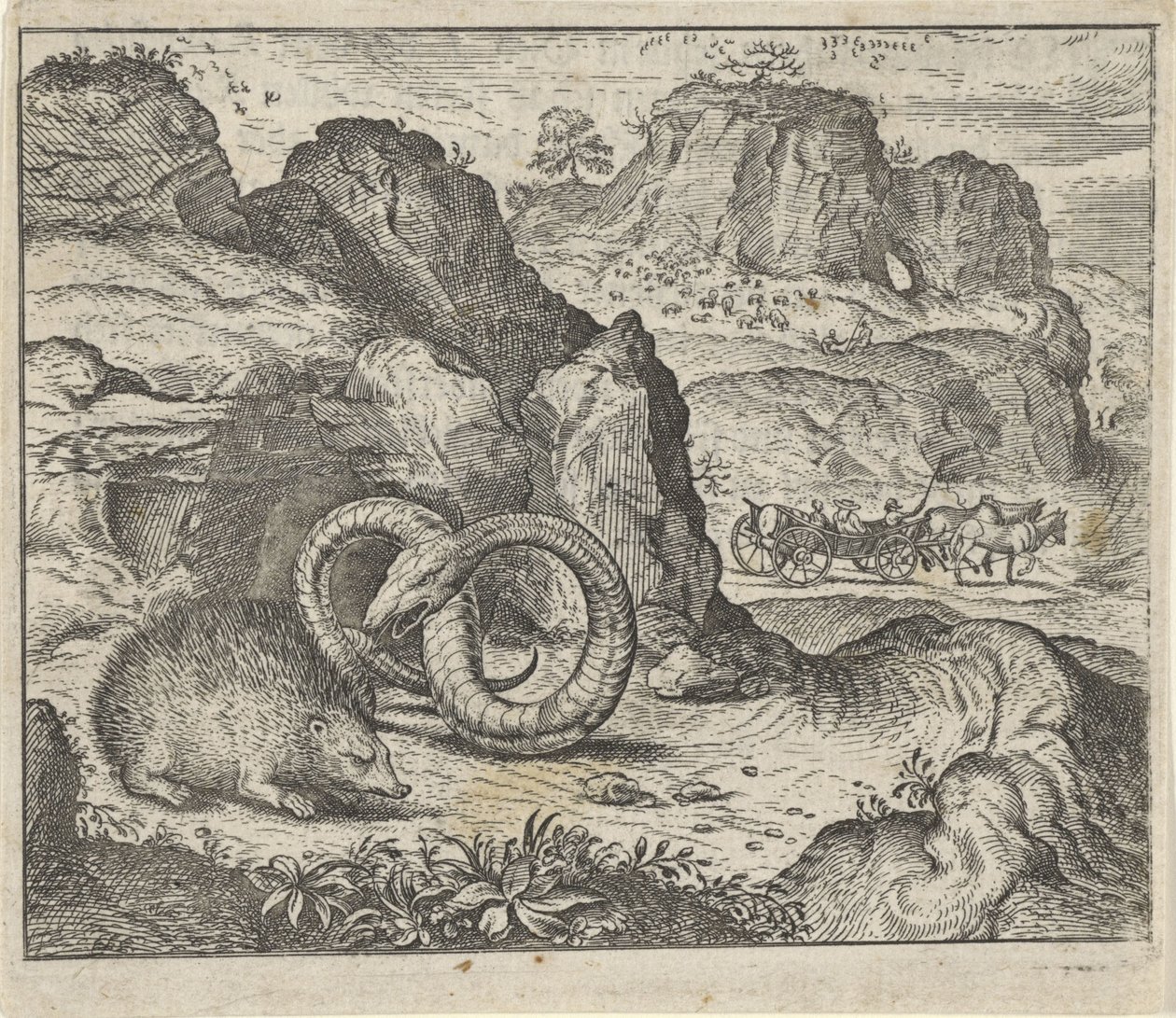CHAPTER 7 | WORKS OF ART
MASTERPIECE 1: The big fish eat the little fish
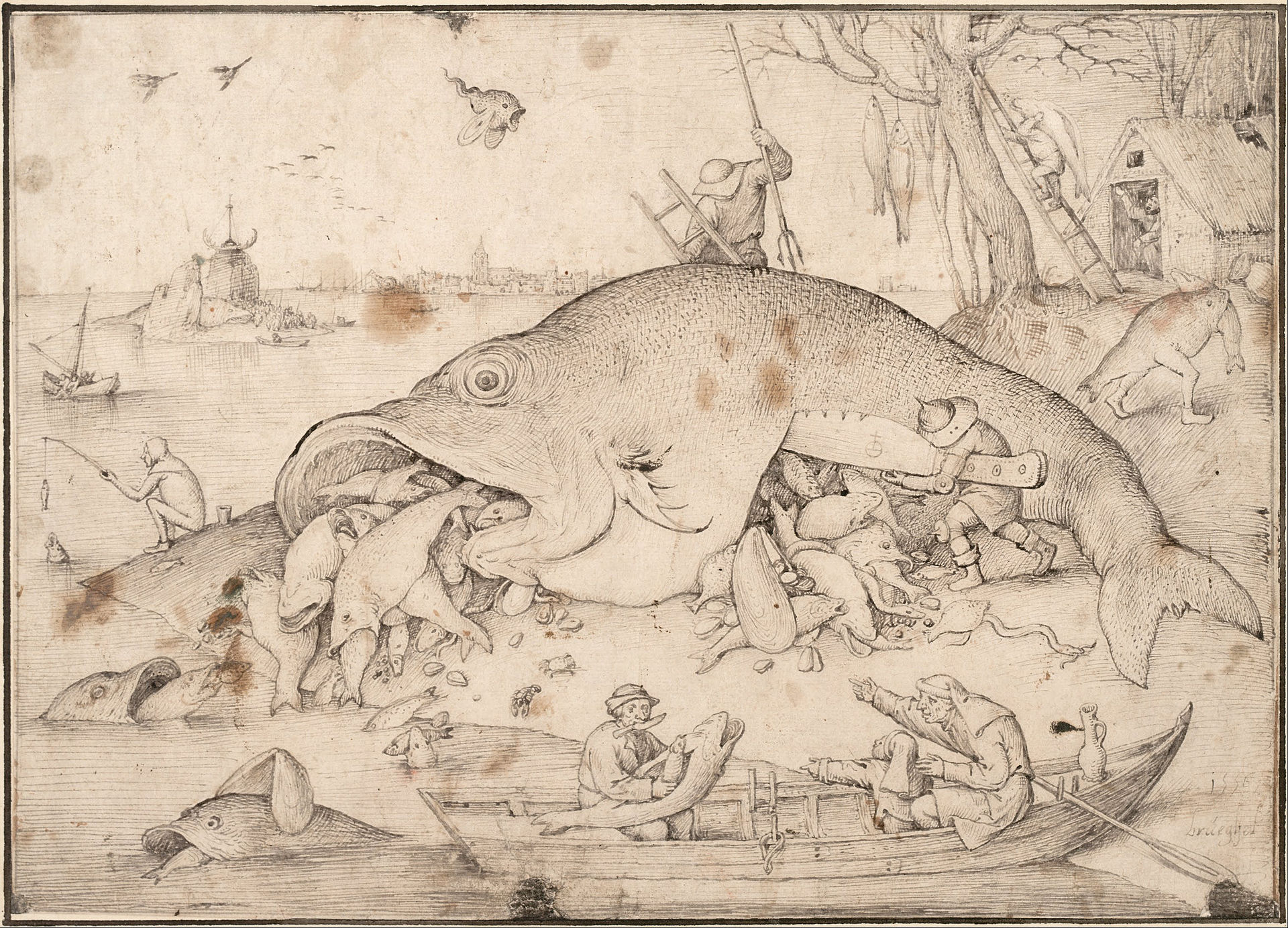
This drawing by Pieter Brueghel from 1556 is about the proverb ‘Big fish eat small ones’. A man in a boat points out the gigantic dead fish to his child. A fisherman cuts open the fish’s belly with an enormous knife. Numerous smaller fish slither out of its mouth and stomach, which in turn have even smaller fish in their mouths. The man explains the meaning to the child: “Greedy fish are just like greedy people who exploit poor people. But greed leads nowhere. Just look at the biggest fish: he has eaten the most of everyone and he loses everything again.” The image refers to the Bible, which states that it is wrong for rich people to exploit poor people. There are funny ideas in the drawing, such as a fish with human legs on the right. He quickly walks away in the hope that no one steals the fish from his mouth.

In 1557, the drawing was very cleverly copied in an engraving by Pieter van der Heyden. For an engraving, the image is first drawn in metal or wood. Then you can make as many prints of it in mirror image as you want, separately or in books. There were no photographs at that time, so engravings were the way to distribute images. The Latin word ‘Ecce’, which means ‘Look!’, is written next to the man who points out the fish to the child.
Extra: you might also want to try to draw how large fish or other creatures swallow smaller creatures. I will show you a few drawings by young students on this subject.
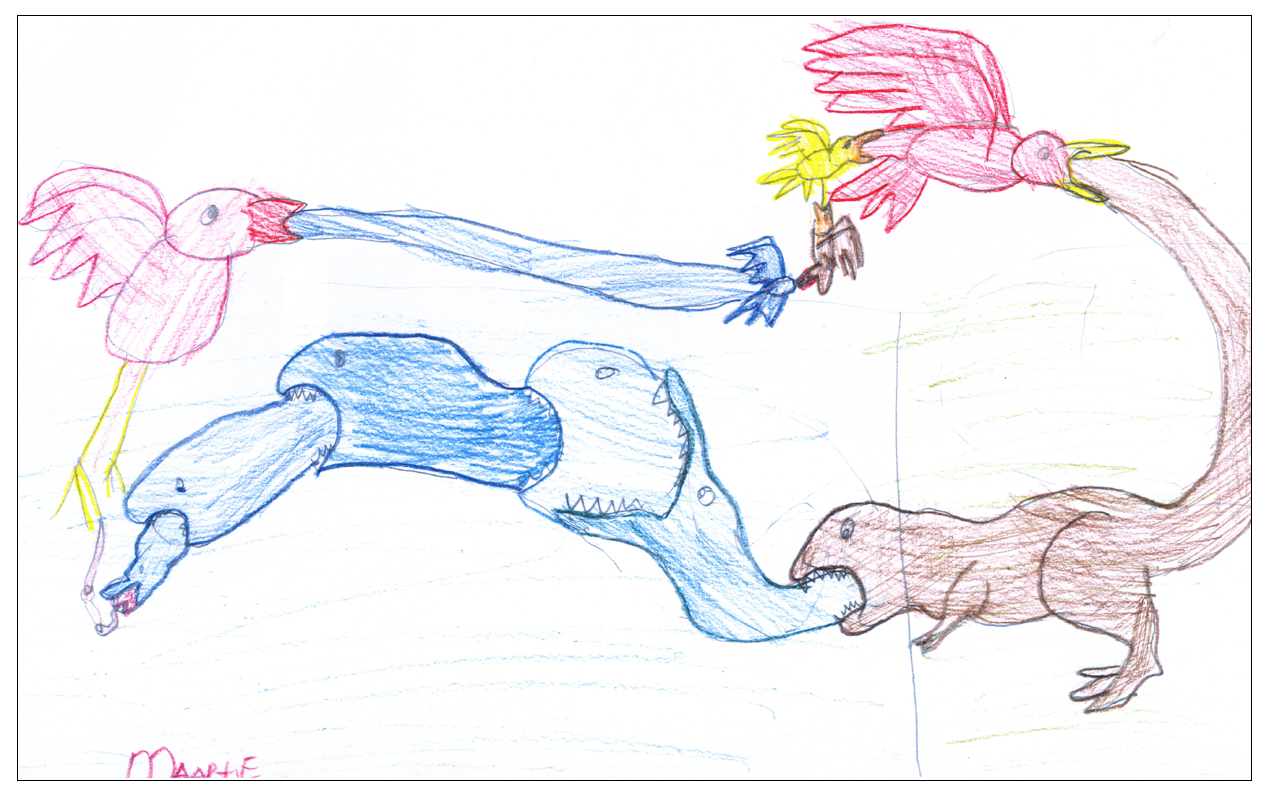
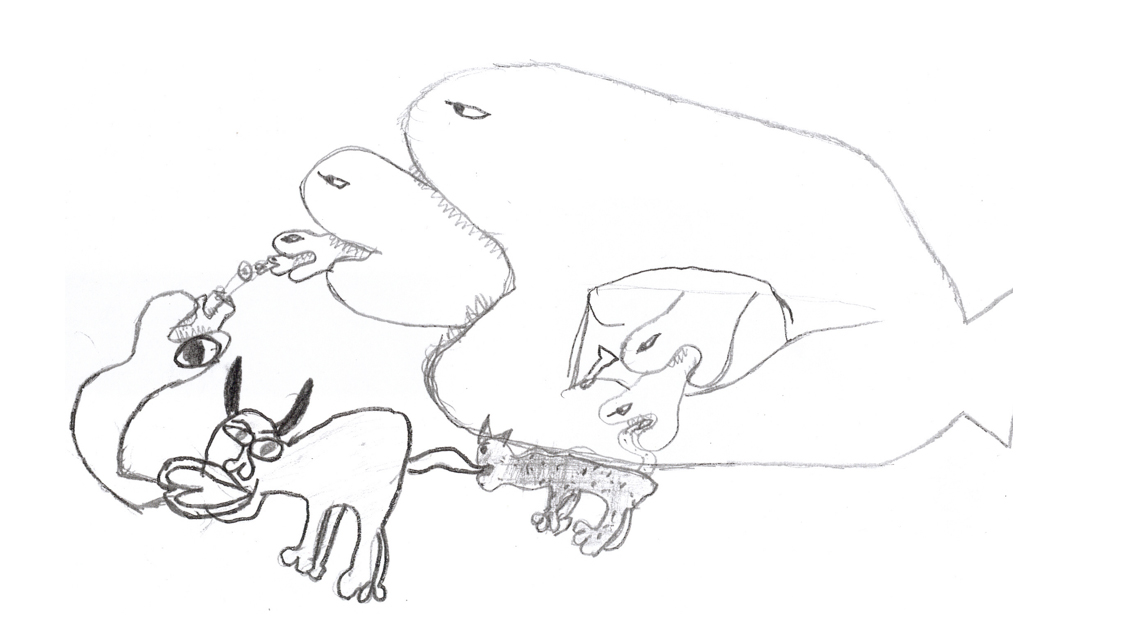

Masterpiece 2: The Kraak
A second example is ‘The Kraak’, a mythical creature of the ocean. It is an octopus that is so large that it can even attack entire ships. It appears in exciting stories such as ‘20,000 Leagues Under the Sea’ by Jules Verne, a book with beautiful engravings. In one of the engravings, a man is grabbed by one of the eight arms of the Kraak. Below you can see more engravings of the Kraak. Because the people and ships are drawn relatively small, the octopus becomes gigantic, just like the giant chicken at the beginning of this lesson. A Kraak also appears in the Disney film ‘Pirates of the Caribbean’ from 2006.
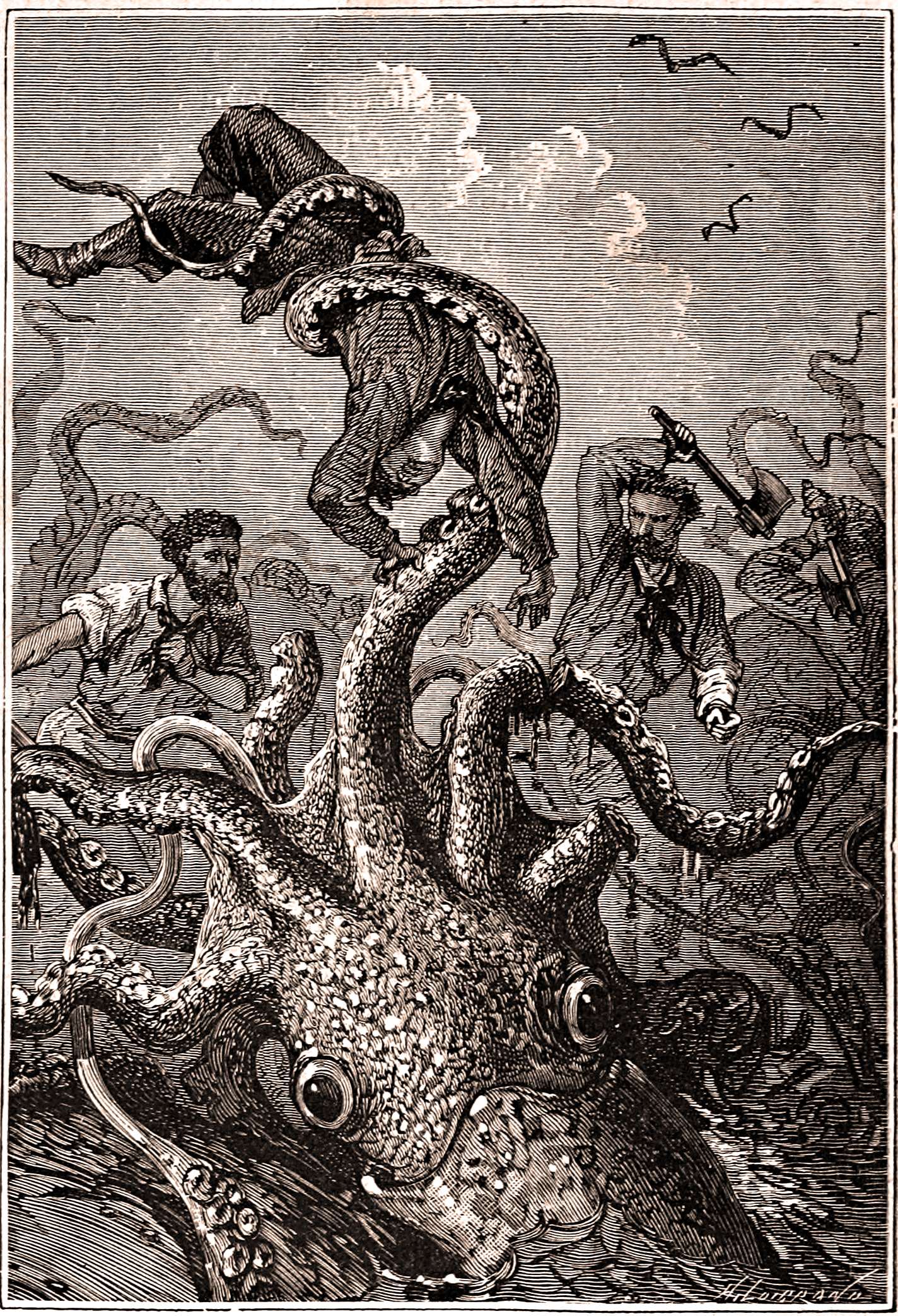
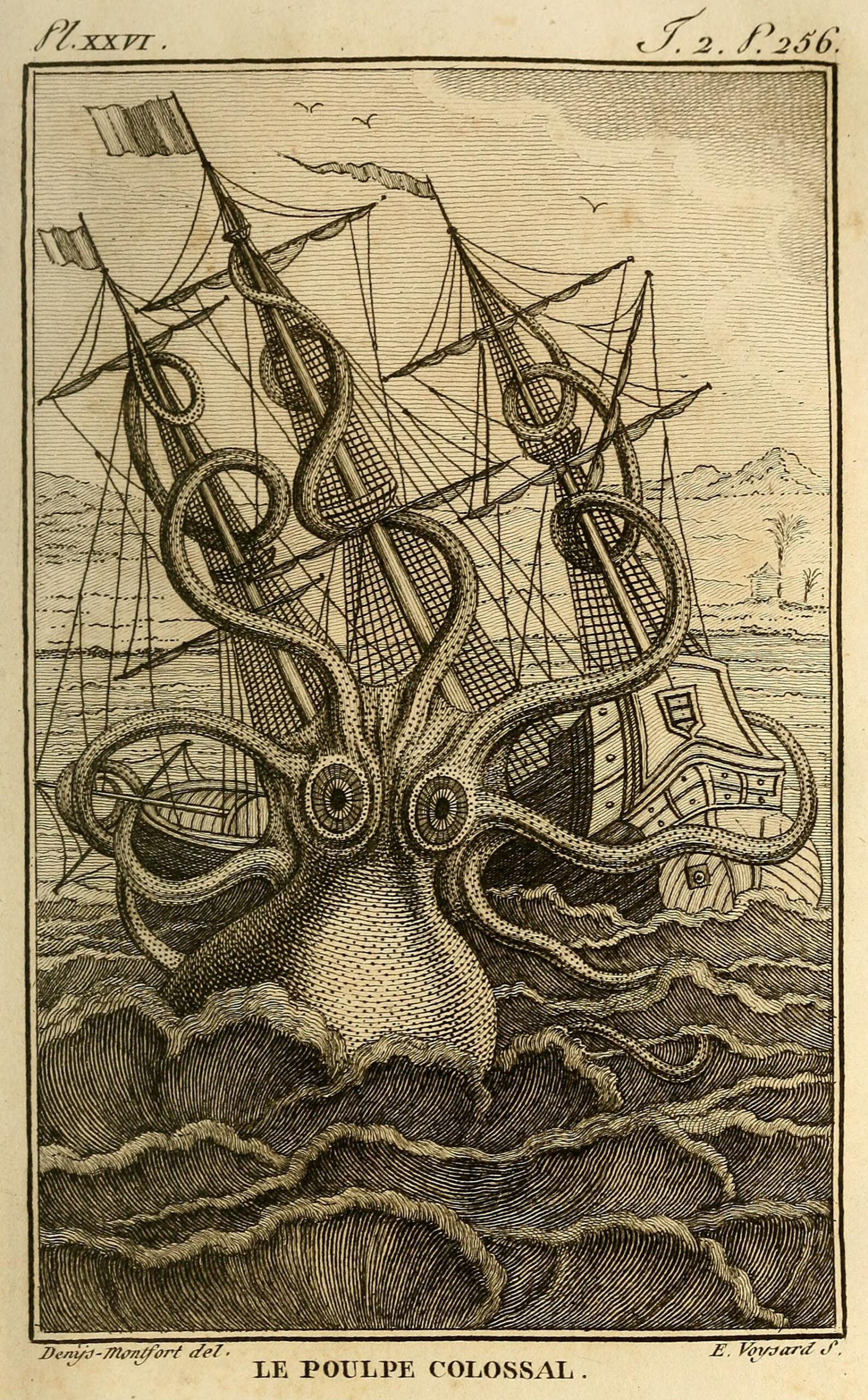

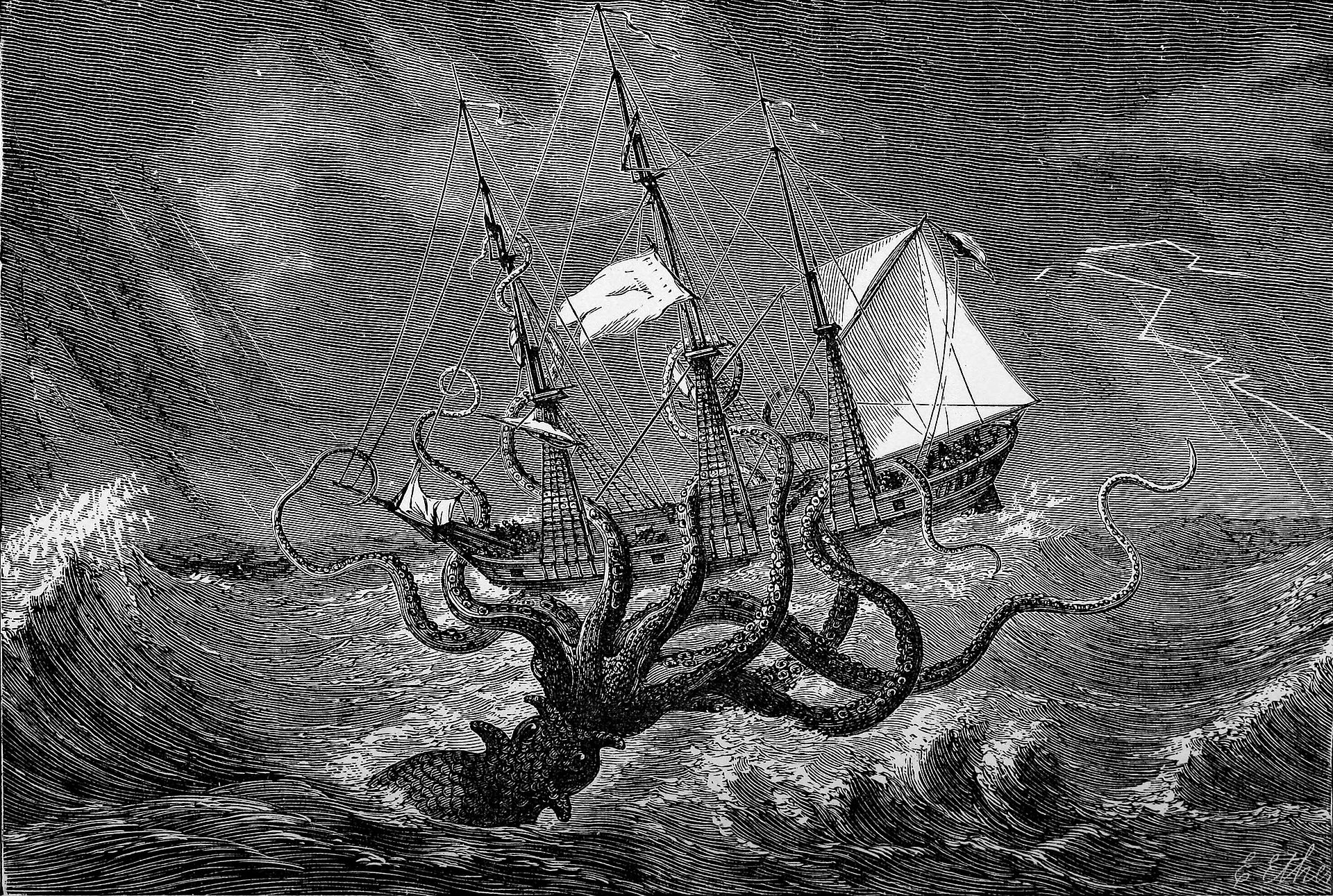
The engravings are made by Alphonse de Neuville, Pierre Denys de Montfort en Edgar Etherington.
If you also find these kinds of mythical animal monsters exciting, then Scylla and Charybdis are really something for you! They are two monsters from ‘The Odyssey’, a travel story from Greek mythology. The Dutch writer Imme Dros and English writer Stephen Fry have beautifully retold the story in ‘Greek myths’.
MASTERPIECE 3: The Fable of the Hedgehog and the Snake (see Chapter 2)
“A hedgehog asks a snake if he can use his burrow for the winter. The fable describes how the hedgehog’s spines disturb the snake’s hibernation. The moral of the story teaches us to be cautious with charity.”
